| Total population | |
|---|---|
| 5,343 (2015) [1] | |
| Regions with significant populations | |
| Seoul | |
| Languages | |
| French, Korean | |
| Religion | |
| Catholicism | |
| Related ethnic groups | |
| French people |
There is a small community of French people in Korea.
French people began coming to Korea as early as the seventeenth century, when French Catholic missionaries first came to the country. [2] However, most missionaries came after the 1886 establishment of relations between France and the Joseon dynasty; the treaty signed between the two countries gave French missionaries the right to evangelise in Korea. [3] [4]
There were an estimated 5,343 French nationals in South Korea as of 2016 [update] . [5] Most are employed by French multinationals operating in the country. The largest concentration can be found in the Seorae Village in Seoul's Seocho-gu district, which because of its location on a hill is often compared to Montmartre in Paris. Korea's only school using French as the medium of instruction moved there in 1984. [6] Most French children only attend elementary or middle school in Seoul, but then return to France afterwards. [7]
In September 2009, the Seoul metropolitan government announced a five billion-won plan to renovate the area and make it more attractive to foreign residents by widening pedestrian walkways and putting up more signs in French. [7] One portion of the pavement, starting from the entrance to Bangbae Middle School, is painted in red, white and blue, the colours of the flag of France. [8]

Daegu, formerly spelled Taegu and officially Daegu Metropolitan City, is a city in southeastern South Korea.

The practice of Christianity in Korea is marginal in North Korea, but significant in South Korea, where it revolves around Protestantism and Catholicism, accounting for 8.6 million and 5.8 million members, respectively. The initial variety of Christianity in the peninsula, Nestorianism, spread to Korea in the Middle Ages by way of China via Middle Eastern adherents to the Church of the East. Catholicism was first introduced during the late Joseon Dynasty period by Confucian scholars who encountered it in China. In 1603, Yi Su-gwang, a Korean politician, returned from Beijing carrying several theological books written by Matteo Ricci, an Italian Jesuit missionary to China. He began disseminating the information in the books, introducing Christianity to Korea. In 1758, King Yeongjo of Joseon officially outlawed Catholicism as an "evil practice." Catholicism was reintroduced in 1785 by Yi Seung-hun and French and Chinese Catholic priests were soon invited by the Korean Christians.
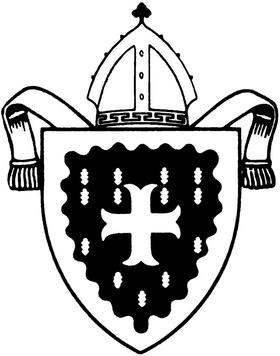
The Anglican Church of Korea is the province of the Anglican Communion in North and South Korea. Founded in 1889, it has over 120 parish and mission churches with a total membership of roughly 65,000 people.
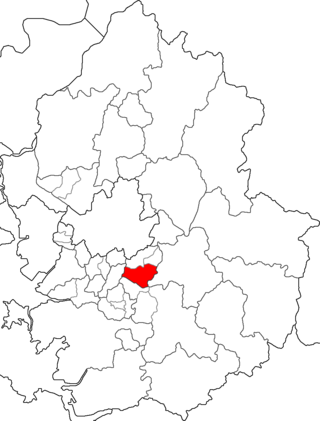
Bundang-gu (Korean: 분당구) is the largest and most populous district (gu) of Seongnam, a major city in the Seoul Capital Area, South Korea. Bundang-gu is one of South Korea's wealthiest and highest developed areas, being the nation's first and largest completely artificial city built in the early 1990s. Many high-rise luxury condos moved in the early 2000s, with a second planned city built in the late 2000s called Pangyo in the same district. Apartment prices are the second highest in Gyeonggi-do after Gwacheon and 7th highest nationwide, higher than many central Seoul districts such as Mapo-gu or Jongno-gu. Apartments around Pangyo station and the high-rise luxury condos around Jeongja station and Sunae station rival prices in the most expensive areas in the country. Unlike older cities such as Seoul, Bundang has no telephone poles overground, resulting in a clean cityscape with well-designed streets.
Koreans in the Philippines, largely consisting of expatriates from South Korea and people born in the Philippines with Korean ancestry, form the second largest Korean diaspora community in Southeast Asia and the 14th-largest in the world, after Koreans in Kazakhstan and after Koreans in Vietnam. As of 2013, statistics of South Korea's Ministry of Foreign Affairs and Trade recorded their population at 88,102 people, a fall of 31% since 2009 after a period of rapid growth in the population in the preceding decade.
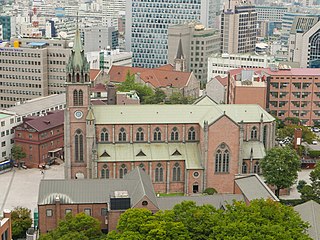
The Cathedral Church of Our Lady of the Immaculate Conception, informally known as Myeongdong Cathedral (명동대성당), is the national cathedral of the Archdiocese of Seoul. Located in the Myeongdong neighborhood of Jung District, Seoul, South Korea, it is the seat of the Archbishop of Seoul, Peter Chung Soon-taick.

Seocho District is one of the 25 local government districts which make up the city of Seoul, South Korea. Seocho is a part of the Gangnam region, along with the Gangnam district of Seoul. Seocho District ranks as one of the richest neighborhoods in South Korea and among the most expensive areas in Seoul with an average sales price of 47.75 million South Korean won per 3.3 square meters. Many of the wealthiest residents are concentrated in the three Gangnam districts including Seocho, known as Gangnam School District Eight.

Seorae Village (Korean: 서래마을), sometimes nicknamed "Montmartre", due to its hilltop location, or sometimes "French Village", is a small, affluent French ethnic enclave in Banpo-dong & Bangbae-dong, Seocho District, Seoul, South Korea. It is home to about 560 French people, roughly 40% of the French community in South Korea. Most of them are employees of French corporations doing business in the country. The majority (370) of the French population are children.
Koreans in Africa form a very small population, estimated at only 9,200 people in 2005, with almost half of these living in South Africa. South Korean nationals can be found in 49 countries of Africa, including the continent and its surrounding islands; they have established schools in 19 of those countries. They form a small part of the Korean diaspora.
Koreans in France numbered 29,367 individuals as of 2014, making them the 3rd-largest Korean diaspora community in Western Europe, according to South Korea's Ministry of Foreign Affairs and Trade.

Banpo-dong is a dong, neighborhood of Seocho-gu, the greater Gangnam area in Seoul, South Korea. Banpo-dong is divided into five different dong which are Banpobon-dong, Banpo 1-dong, 2-dong, 3-dong and 4-dong.

Hannam-dong (Korean: 한남동) is a dong, neighbourhood of Yongsan-gu in Seoul, South Korea. One of the most affluent neighborhoods in the country, it has been portrayed continuously in South Korea's popular culture as a wealthy and luxurious hotspot, and as a result of this reputation, the neighborhood has been the subject of numerous domestic films, television series, and popular music references.
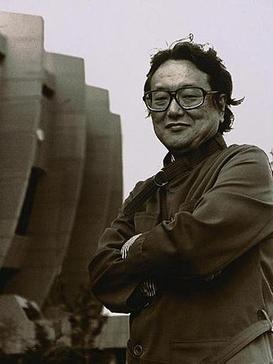
Kim Swoo Geun was a prominent South Korean architect, educator, publisher and patron of artists. Along with architect Kim Chung-up (김중업), he is recognised as a significant contributor in the history of Korean architecture. With his support for diverse art genres of Korean culture, he was referred to as Lorenzo de Medici of Seoul by TIME in 1977.

France–South Korea relations have spanned over a period from the 19th century to the present. In 2016, France and Korea celebrated the 130th anniversary of diplomatic ties between the countries.
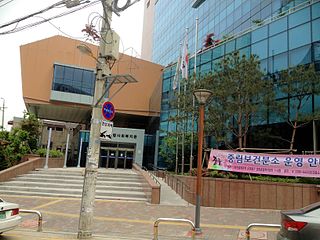
Jungnim-dong is a dong, neighbourhood of Jung-gu in Seoul, South Korea.
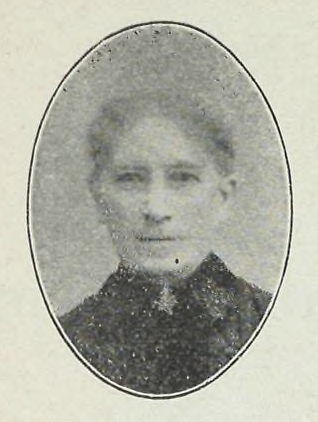
Mary Fletcher Benton Scranton was an American Methodist Episcopal Church missionary. She was the first Woman's Foreign Missionary Society of the Methodist Episcopal Church representative to Korea and the founder of the Ewha Girls School under Emperor Gojong. Today, the Ewha Girls School is the Ewha Womans University, one of the most prestigious women's schools in Asia. Scranton also founded the Tal Syeng Day School for Women in Seoul and the Training School for Bible Women.

The French School of Seoul is a French international school in Seorae Village, a community in Banpo-dong, Seocho-gu, Seoul, South Korea. It includes kindergarten through secondary school education, which includes high school.

Saenamteo (Korean: 새남터) is a location on the north bank of the Han River in Seoul, South Korea. During the Joseon Dynasty it was a sandy area outside the city walls. that was used punishment of political prisoners, including Roman Catholic believers, priests, and missionaries among the Korean Martyrs. A memorial church, consecrated in 1987, now stands on the site and houses a Martyrs' Memorial.

MBC TV is a South Korean free-to-air television channel and is considered the first private company in South Korea launched on 8 August 1969 and owned by Munhwa Broadcasting Corporation.

John Lee Tae-seok, SDB was a South Korean Catholic missionary priest, teacher, architect, doctor, and brass band conductor.